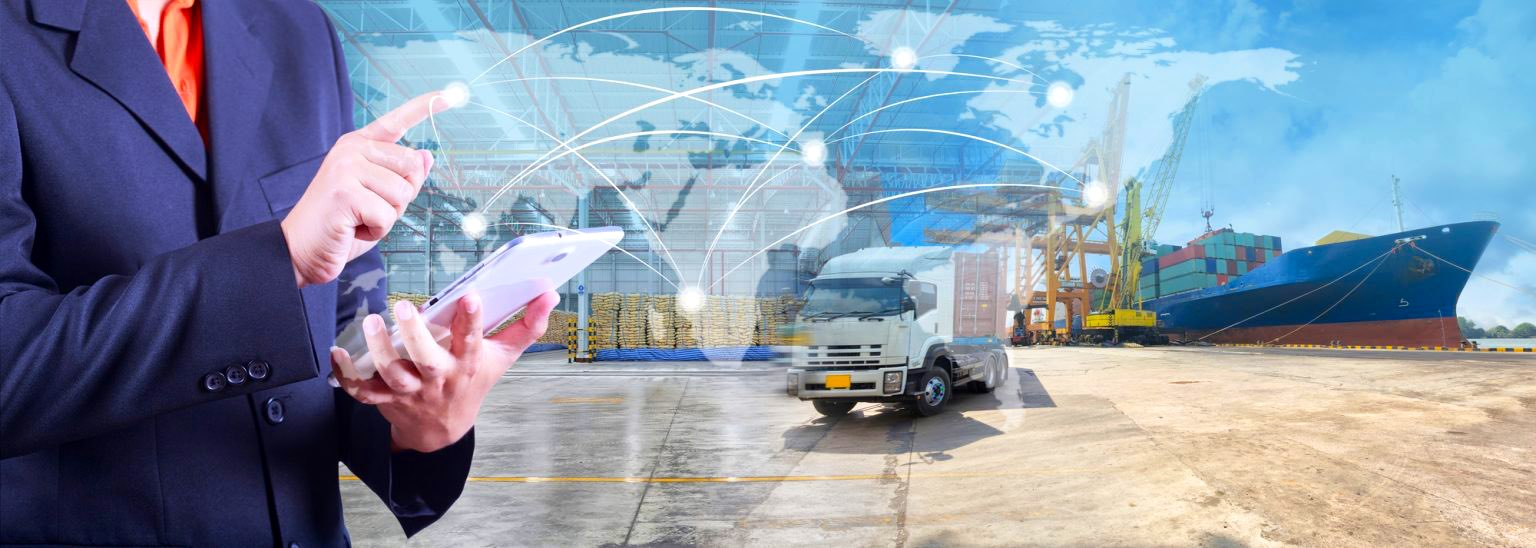The Four Horsemen of Digital Transformation
Metamorphosis can be defined as an ‘arc of transformation’ creatures undergo in order to progress in their life cycles. This phase of change is often a more challenging one for businesses than any other entities, for their operations are expected to run and transform simultaneously, all to keep the curve steady. In the summer of 2020, Thomas H. Davenport, the American analytics guru along with the “data doc”, Thomas C. Redman, summarised this concern through their article in the Harvard Business Review. The course of the report analyses the meaning of digital transformation for newly adapting companies. Davenport and Redman introduce us to the four horsemen of a successful digital transformation: Technology, Data, Processes and the Capability of an Organisation to Change.

The supply chain industry moves ahead with unprecedented leaps on digitalisation. The efficiency, the reduced margin of errors benefits the industry all while reducing the cost it incurs. The supply chain is now better prepared for unforeseen situations at every mile. The conundrum of a successful digitalisation is unboxed, where “even the best talent does not guarantee success, but a lack of it almost guarantees failure”. The magnitude of this process is often underestimated by most companies and the entire burden is subsequently shifted upon the new technology the company chooses to adapt to, which brings us to our first horseman:
1) Technology
 Easy to use and precise technology helps the business in improving efficiency
Easy to use and precise technology helps the business in improving efficiency
Digitisation only goes on to benefit a business when it is optimised best to suit the needs of its users, who span through numerous departments. If the value of a technology’s contribution is not integrated into the surrounding processes, then the miles walked to make the change prove to be of very little use. Valuable communication whilst implementing technologies and the consequent personnel training then come to be a prerequisite more than a value addition. Technical debts (short sighted technical amendments) such as these hold back businesses in the longer run.
Supply, the last leg of a production cycle, remained a murky space in the pre- SaaS (Software as a Service) era. Integrating a new approach into the chain has changed the face of it. The faultless application of this technology in the supply chain has erased a collection of problems from the past. Inventory myopia, missing inventory, tedious POD administration and mishandling seem to be instantly detectable if not solvable with the technology. The SaaS innovation is ‘balanced’ in its approach as well as has a seemingly endless application to the traditional change. Any future improvisations do not require disbandment but can simply be added onto this cloud-based technology.
2) Data
The presence of sufficient reliable data is of paramount benefit to the analytics a company must undergo before they adopt a software. An interesting paradox of data is presented by the authors of the article where, “most companies know data is important and they know its quality is bad, yet they waste enormous resources by failing to put the proper roles and responsibilities in place”. As a result, the consistent improper implementation of software by a company makes itself visible in their year-end figures.
 Handling and analysing data is the key to great performance and accurate output
Handling and analysing data is the key to great performance and accurate output
Online analytics in supply chain ensures that the momentum of the digital evolution never dies down, especially when the software is designed to cater your exact needs. The interface of a digitised approach embeds operational, accounting, invoicing and tracking metrics on a single platform that updates itself with real time. Such platforms provide a clearer visibility into what leg the supply chain is currently in. The asset maximisation in factors such as the carrier vehicle is made convenient as well with the help of your metrics calculated by the SaaS. Qualitative problems of the past, such as driver performance and loyalty, are now measurable statistics on the software’s ever churning business module coupled with a cohesive supply process that helps you to present the right inventory at the right time consistently. CargoFL shoulders that burden for you with Cargo Analytics, a consequence of years of intensive research.
3) Process
Failing to view transformation as a process with an ‘end-to-end mindset’ leads to improvisation of an establishment in fragments and silos making it an uneven and often an incomplete event. This diminishes the value of digitisation as important and helpful, but not truly transformative. From the digitisation of a warehouse to the last lap of supply delivery, all the logistical processes a manufacturer might have to encounter along the way are looked after on adopting a digitised format. Supply chain has always been a multi-faceted process to register and control. A combination of the ERP (Enterprise Resource Planning) and CRM (Customer Relationship Management) into a single module now allows you to gauge your chain at a single glance. Businesses can bestow a sense of preparedness upon themselves by making use of such process covering platforms ensuring the front end, which their clients are exposed to, stays supplied even for the most unprecedented demands in the future.
 Digitalisation in the processes has resulted in an increase in the output and accuracy
Digitalisation in the processes has resulted in an increase in the output and accuracy
4) Capability of the Organisation to change
The people-centrism of the process is often overlooked. Change remains a constant factor for an organisation to cope with while making sure their customers do not know they are undergoing one. In the fast-moving consumption era, the supply chain of businesses remains one of the more complicated aspects to digitise. The framework requires all the involved personnels to unlearn and relearn, which is often a difficult exercise. The individuals find themselves already accustomed to the pre-set workings of the process, to find four inch screens pushing away the old school methods is naturally intimidating. Metaphorically speaking, “our systems don't talk” is the common grumble you hear echoing. This is why we have our interface interact with you. A cordial SaaS that holds your hand as you navigate through this uncertainty is the need of the hour. Empathising with all your worries, CargoFL delivers a technology ecosystem that solves problems beyond the cliche hypotheticals.
 Evolution in technology now provides you with the power to grow exponentially at your fingertips
Evolution in technology now provides you with the power to grow exponentially at your fingertips
Duration, Integrity, Commitment and Effort (also known as the DICE framework), as reviewed by the 2005 HBR, remain the make-or-break points of this transition. This framework tracks the infusion of change within the organisation estimating the likelihood of its success. Very little can be more committed, more tireless and faster than a code that was designed to assist you. As for the integrity, it is endlessly available at our end.
CargoFL Dispatch solutions look at consolidating all the necessary paperwork in a single paperless location where all your vendors are laid out before you. CargoFL Trucker then comes in to consider and amend the problems faced by road freight in countries across the world. From truck breakdowns to road mafias, paperwork hassles to fuel cost management, all necessary parameters of a road supply chain have been incorporated into its framework. The burden of inventory management and tracking time in-time out systems has diminished into a few screen taps.
Get to know more about us and our work products through our social platforms:
LinkedIn:https://in.linkedin.com/company/cargofl
Twitter:https://twitter.com/cargofl?lang=en